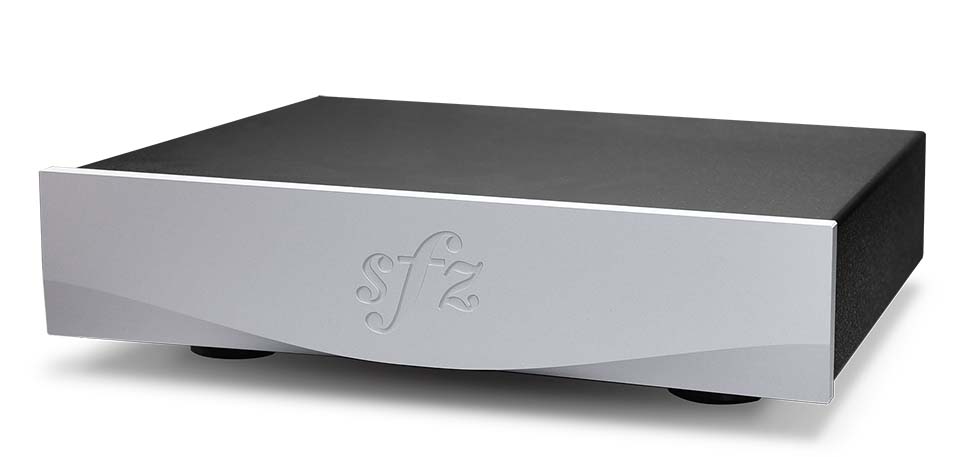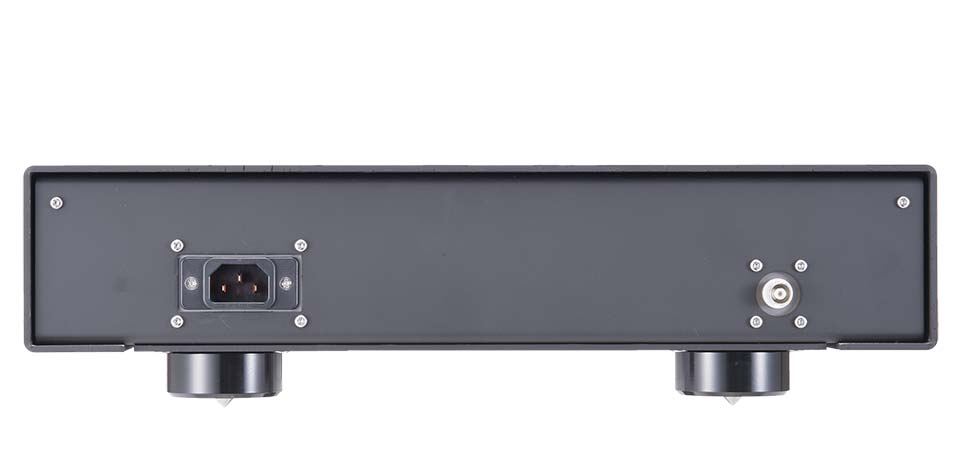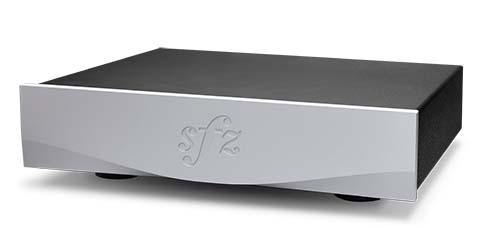Sforzato PMC−010EX Reference Master Clock
Specifications
Master clock that determines sound quality
All digital audio equipment such as network players, D/A converters, and CD players operate on the clock generated by the internal clock generator. When a digital signal is converted to an audio signal, it operates based on this clock, so the quality of the clock greatly affects the sound quality. The Sforzato master clock generator supplies a much higher quality clock than the built‐in clock of the device, and contributes to a dramatic improvement in sound quality.
Ultimate near phase noise (−120 dBc/Hz at 1 Hz)
The clock transmitter of PMC−010EX is an OCXO transmitter with the ultimate near‐phase noise characteristics. In terms of low phase noise near the oscillation frequency, its superiority is overwhelming compared to general rubidium and cesium transmitters. Rubidium and cesium transmitters have excellent absolute accuracy and long-term stability in principle. If you want a clock that won't go crazy after 100 years, accuracy and long‐term stability are probably the most important considerations. However, the clock performance required for digital audio is not absolute precision.
The accuracy of the most accurate tuning meter (stroboscope) used by musical instrument manufacturers is about 1/10 cent. One cent is 1/100 of a semitone (the pitch between the adjacent black and white keys on the piano). When converted to frequency, the accuracy is about several tens of ppm. It is accurate enough to be reached even with an ordinary crystal transmitter. High‐performance transmitters normally used for high‐end audio have about 10 times the accuracy, and there is no point in seeking higher accuracy.
The clock performance required for digital audio lies in the phase noise that affects jitter (frequency components other than the transmission frequency that should not be present, that is, impurities = noise). If the clock, which is the basis for all the operation of digital audio, is dirty with noise, it cannot be played back correctly. Normally, the clock signal output by the clock transmitter is supplied to the D/A converter through the PLL in the subsequent stage. At this time, filtering is performed, so it is possible to remove noise at frequencies that are far from the transmission frequency of the clock transmitter. In other words, the noise at frequencies far from the transmission frequency is determined by the performance of the PLL. However, since noise at frequencies near the transmission frequency of the clock transmitter cannot be removed by the filter, it becomes jitter during D/A conversion as it is. Sand grains and pebbles can be easily separated by a "sieve" (filter), but imagine that you cannot separate sand grains and sand grains that are only slightly different in size by sieving. The only way to suppress near‐phase noise is to use a clock transmitter with low near‐phase noise.
The near phase noise of PMC−010EX is −120 dBc/Hz at 1 Hz. With a general rubidium transmitter, it is about −70 dBc/Hz. Even a high‐performance US‐made rubidium transmitter used by famous audio makers for the master clock generator is about −100 dBc/Hz. The difference is just overwhelming.
Power supply with a margin
The clock is equipped with a large, generous, discrete analog power supply that uses a large‐capacity toroidal transformer and an ultra‐high‐speed, ultra‐low‐noise SiC Schottky diode to maximize the performance of the transmitter.
Robust housing
Unnecessary vibration and external noise are thoroughly suppressed by a robust housing with a 15 mm thick front panel carved from an aluminum block and a 3 mm thick aluminum body. The clock oscillator has a structure that floats from the housing and does not transmit vibration.
Discerning internal wiring and output terminals
With the cooperation of Sekiguchi Machinery Sales Co., Ltd. (Acoustic Revive), the internal wiring uses an elliptical single‐wire PC‐triple C wire. The purity of the power supply and signal is ensured by using a laborious wiring method that does not use a connector as much as possible.




